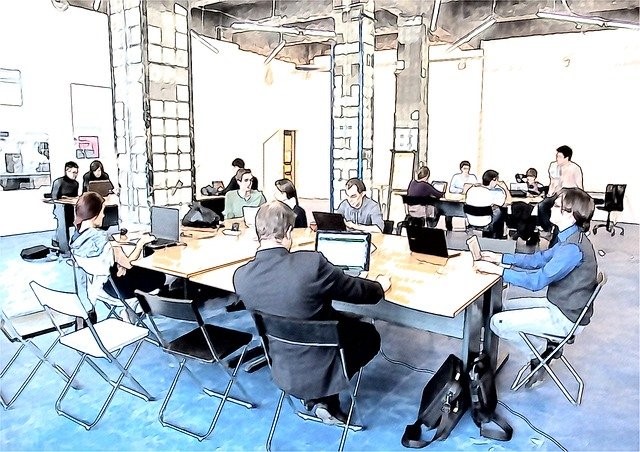Just as good customer experience helps in gaining and retaining customers, good employee experience (EX) helps your business attract and retain talent. This is more important as companies increasingly struggle to recruit and retain staff. However, finding ways to boost the satisfaction of employees not only improves employee turnover. MIT research suggests ‘that enterprises with a top-quartile employee experience achieve twice the innovation, double the customer satisfaction, and 25 percent higher profits.’
The demand for better EX partly stems from younger generations now making up a greater percentage of the workforce. Having grown in up in a world of digital social networks, Millenials and Gen Z are savvy, informed and highly connected. The importance they attach to digital word-of-mouth are the reason employer review sites like Glassdoor are increasing. Information about employee satisfaction at your company is therefore increasingly available to all. These upcoming generations also value the employee experience much more. A 2018 Gallup survey which asked what Gen Z and millennials look for in an employer found that ‘above all, they want an employer who cares about their wellbeing.’
These generations also want access to similar technological experiences at work that they have come to expect as consumers. They value business applications that make efficiency at work easier and which simplify everyday tasks, such as submitting expense reports or requesting time off.
It may seem like improving employee experience is all take and no give. However, research shows businesses with higher employee satisfaction ratings experience lower absenteeism, reductions in staff turnover and therefore a reduction in costs. In the US, a Temkin Group study also found that 82% of employees at high-performing companies were highly engaged as a result of a positive employee experience. These companies outperformed their competitors in both financial results and customer experience.
More than Perks and Benefits
Like customer experience, employee experience should be holistic. It should describe the whole experience and journey of how people feel during their time within a company. EX can’t be achieved simply by offering perks such as free drinks, parking, a gym or discounts.
EX requires evaluating all company-employee interaction processes from recruitment to retirement. These touchpoints should then be enhanced using insight from the employees’ personal experiences. It also means supporting employees by providing them with the tools they need to do their best work. The aim being to increase engagement, which then boosts productivity. Such changes can improve employee wellbeing in a meaningful way, reducing burn-out and absence and increasing loyalty and morale.
The IBM Smarter Workforce Institute found that when employees had positive experiences in the areas of belonging, purpose, achievement, happiness, and vigour (what they called the Employee Experience Index) companies saw increased performance too. Their study concluded that positive employee experience was unmistakably connected with driving the bottom line.
Planning a Strategy focused on Mutual Benefit
1. Improved user experience of your recruitment processes = boosted acquisition
These days we have a low tolerance for websites and apps that are slow, confusing, or difficult to navigate. If this is the type of first interaction a potential employee has of your organisation when applying for a job, all of those things communicate something about your company which is less than positive.
2. Invest in work-related tools and technology = improved productivity and efficiency
If employee productivity is low, first consider whether investment is overdue into modern tools and technology to help teams accomplish work efficiently. According to 2019 report by Deloitte, only 42 percent of workers felt satisfied with day-to-day work practices, and only 38 percent said that they were satisfied with work-related tools and technology.
Improving employees’ ability to access information and data quickly in order to make decisions is one way technology can be used to employee and employers’ mutual benefit. A global study by Workaday found that organisation-wide data access was the most important factor in driving agile decision-making practices, resulting in improved collaboration and communication throughout your business.

3. Listening to your employees = improved motivation and morale
According to employee engagement researchers Energage, ‘The majority of organisations still don’t administer engagement surveys’ which ‘leaves leaders to assume (or guess) what matters most to their people.’
Researching employees’ needs, expectations, their preferences and opinions on the organisation as a whole may give some enlightening insights. However, to increase staff motivation it is vital essential this feedback is acted upon otherwise employees will feel undervalued and ignored.
Cisco, for instance, asked 800 employees to identify the moments that matter most in the interactions between HR and employees. They used the information to completely redesign their staff onboarding process.
4. Involve employees in your strategy design = meaningful employee experiences
Define each stage of your company’s EX journey, from application through to retirement. By utilising employee research to discover what employees are thinking and feeling at each stage, HR will have a much better understanding of what is lacking. Processes can then be redesigned to bridge the gap between the current reality and what you’d like employees to be feeling.
Randy Wandmacher, Talent Lead at Accenture, stresses the importance of ‘co-creation with real people. If it’s just HR sitting designing what will be rolled out, HR has missed the point.’

5. Respond to flexible working needs = improves acquisition, inclusion, retention
The experience of COVID has made employees willing to take a stand over their need for flexible work arrangements. However, a recent article by the BBC found that while ‘9 in 10 people say they want flexibility in their next position… three out of four jobs advertised in the UK still do not offer flexible work options.’
Adding transparent work flexibility policies to your EX design is a way of elevating your business above the competition at the acquisition stage. This is particularly important in the current climate, where many positions remain unfilled; UK vacancies soared to a 20-year high of 1.1 million between July and September 2021.
Women with families have long sought more flexibility at work. According to a 2021 study by YouGov this is as important as ever, as ‘2 in 5 women who work full-time and have a partner (38%)’ say domestic work and childcare mostly falls on them, ‘compared with only 9% of men in the same situation.’ Now aged 25 to 40, ‘nearly two-thirds of millennial women view remote work as a priority’ according to a recent survey by Skimm. 22% from this group also said, ‘they would no longer consider working for an employer if work-from-home wasn’t an option in the future.’ Yet this segment is an important talent pool that employers can’t afford not to access in today’s employee job market.
